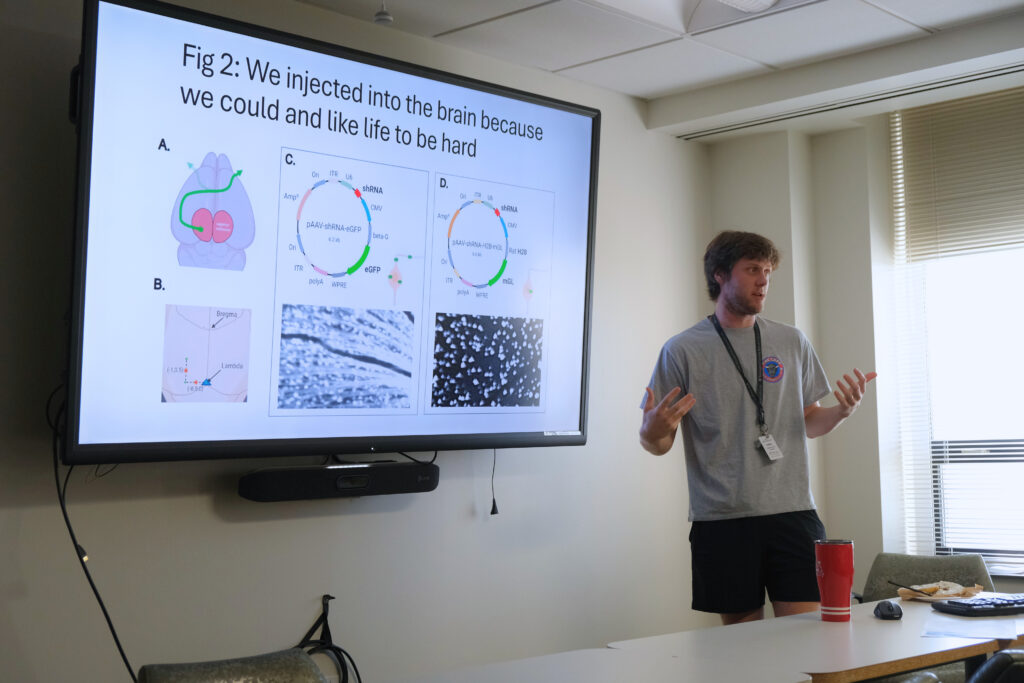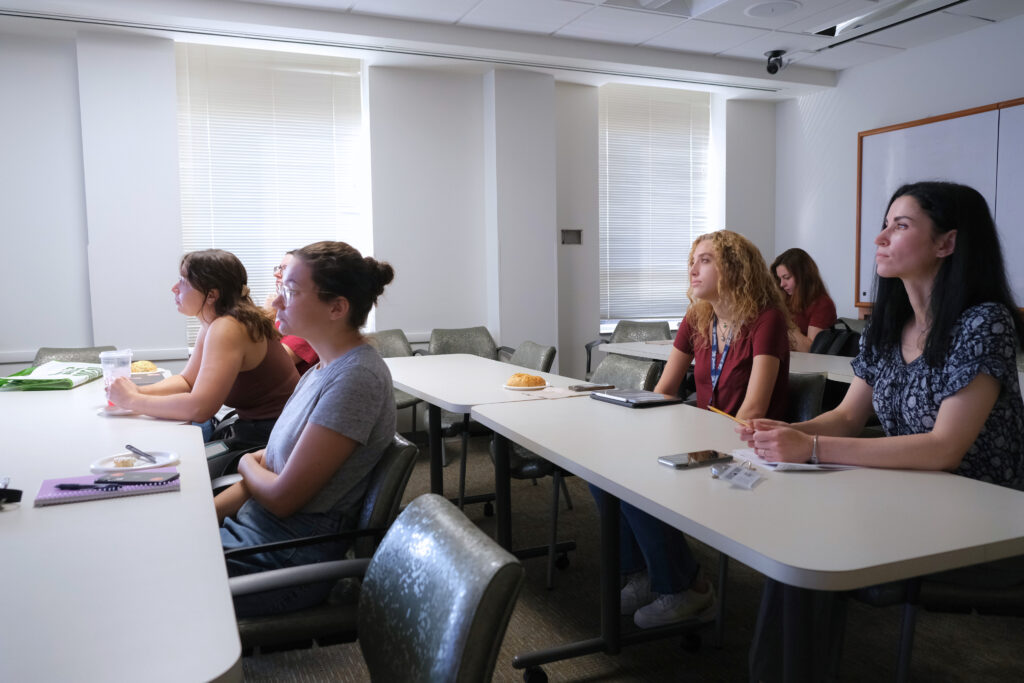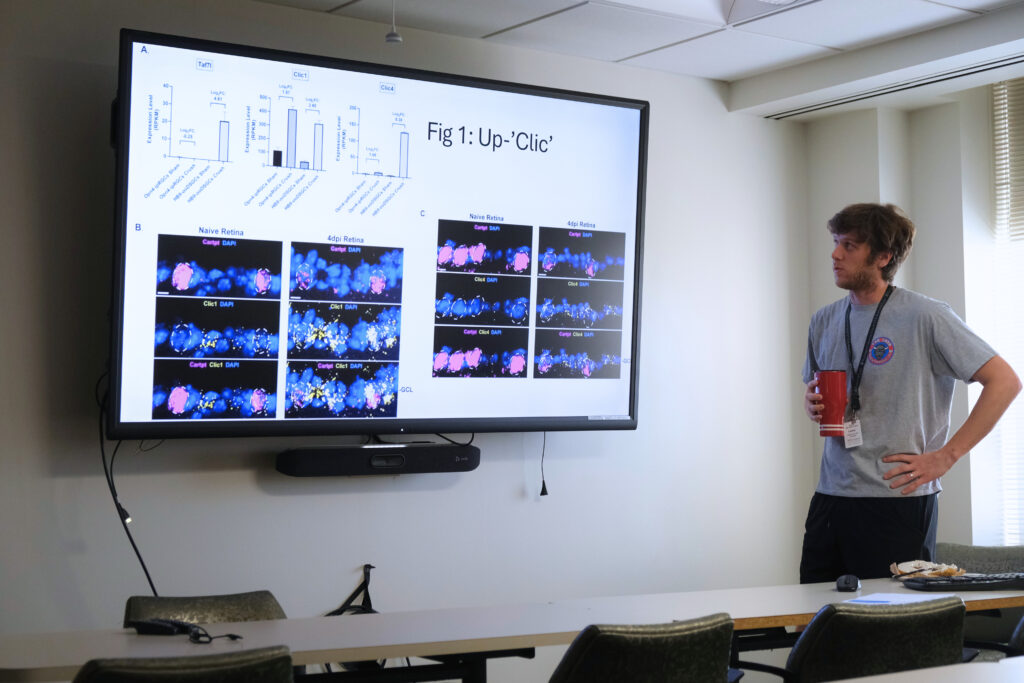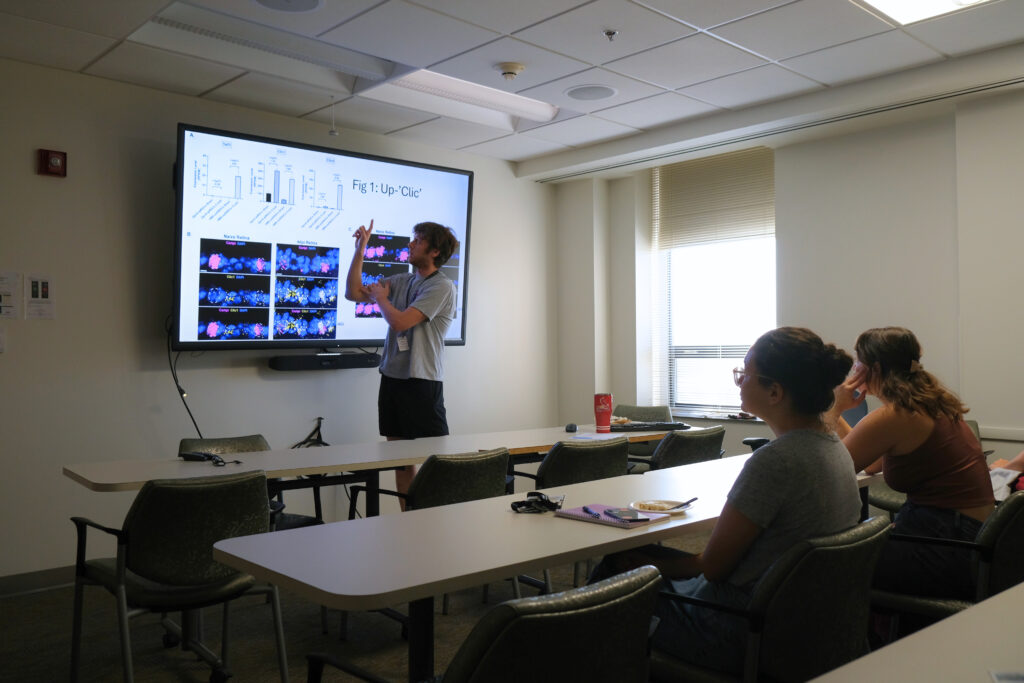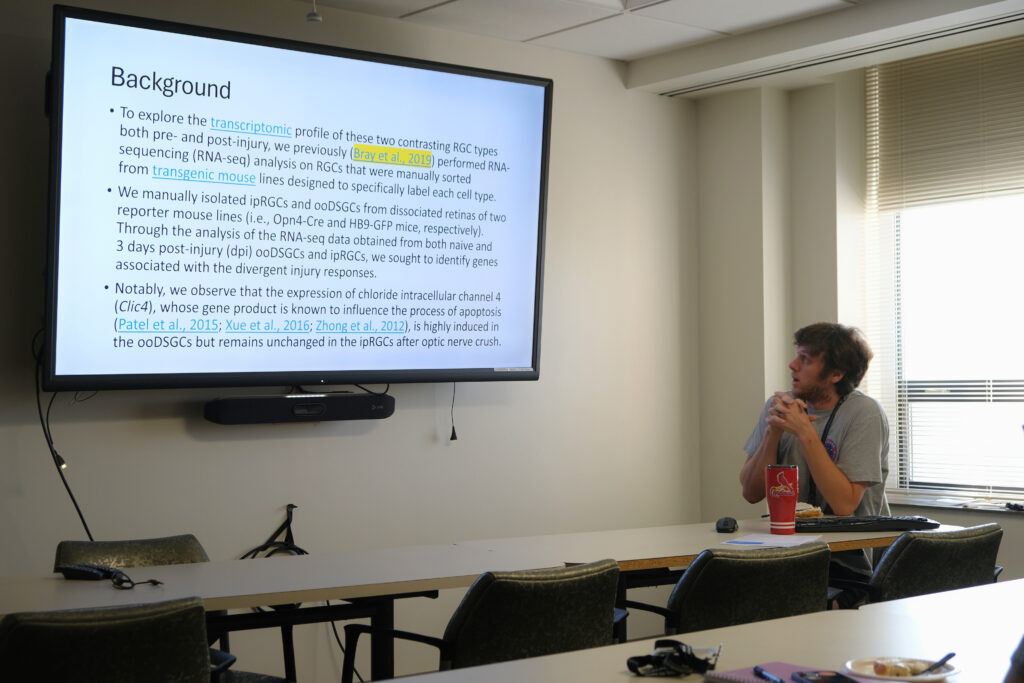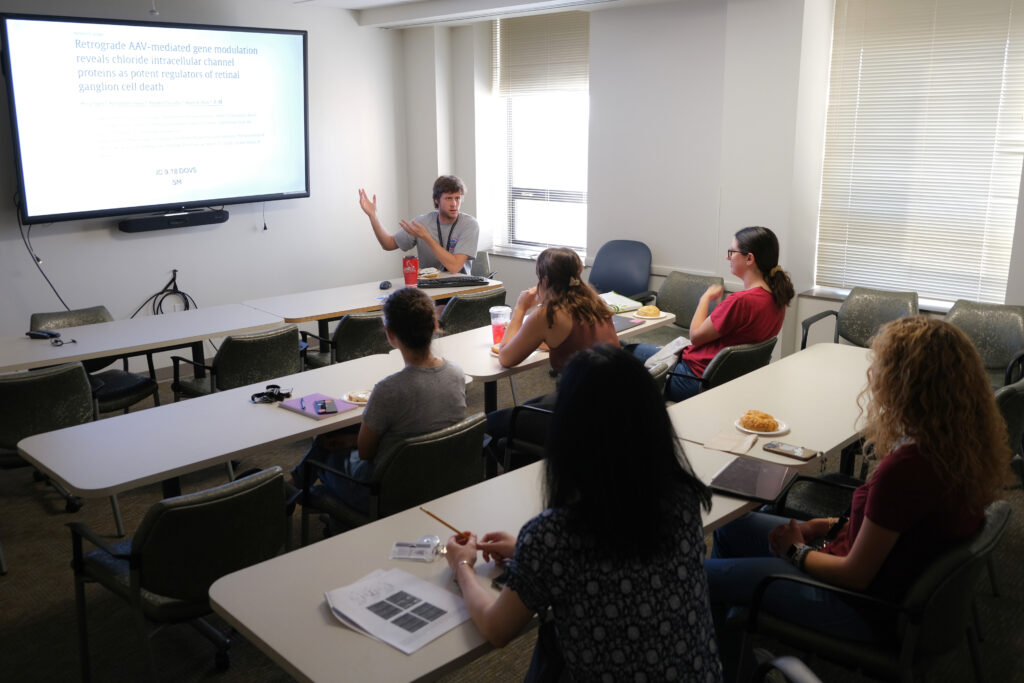Sean McCracken, a Neuroscience PhD candidate in the Williams’ Lab, gave his presentation at the Vision Science Journal Club on Retrograde AAV-mediated gene modulation revealing chloride intracellular channel proteins as potent regulators of retinal ganglion cell death.

Sean explained that Tapia et al used a special method to label and track viruses in retinal ganglion cells (RGCs) by injecting them into a specific part of the brain called the Superior Colliculus. This technique, called ‘Retrograde AAV-mediated gene modulation,’ allowed them to study gene activity in these cells. Using sequencing data previously collected in the Park Lab, they analyzed different types of RGCs that either survived well or poorly after a traumatic injury to the optic nerve. They focused on two genes, Clic1 and Clic4, which were highly active in the poorly surviving RGCs. When they reduced the activity of both these genes, they found that more RGCs survived after the injury.
